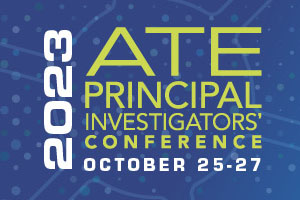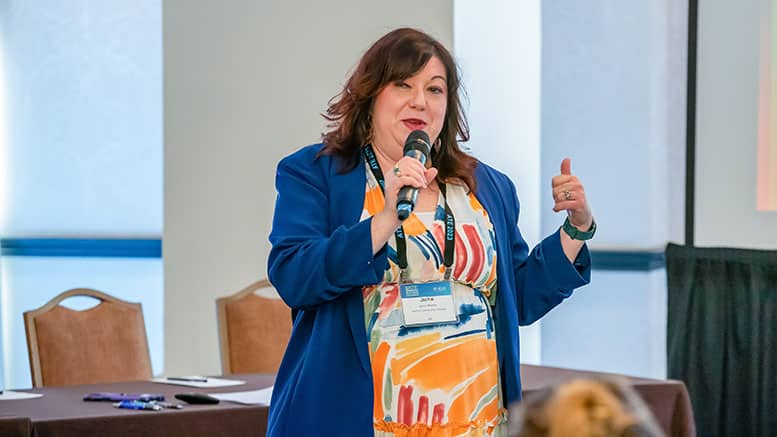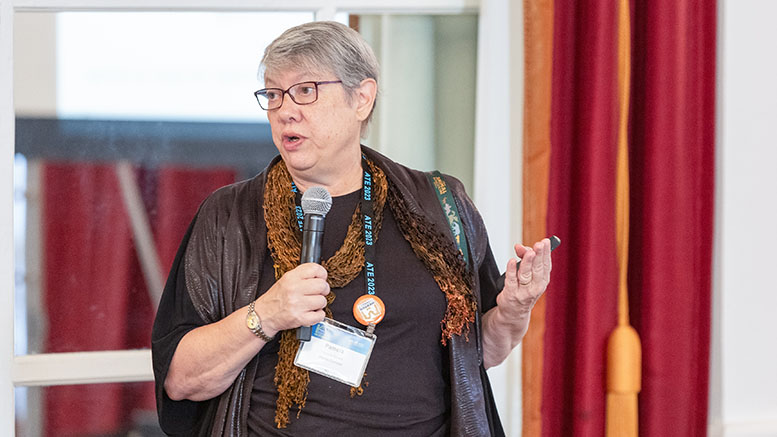Ask any 12-year-old girl what she wants to be when she grows up and she most likely will say a doctor, teacher or veterinarian.

“They want to help people,” explained Pamela Silvers, a co-principal investigator of Mentor-Connect.
But most colleges promote their science, technology, engineering and math (STEM) programs to prospective students with the promise of making money and getting good jobs, she said, adding: “Studies show when men pick careers, that’s why they pick careers.”
Community colleges that want to improve student recruitment and retention need to market STEM careers in ways that also appeal to women, Silvers told a session at the 2023 Advanced Technological Education (ATE) Principal Investigators’ Conference held last week in Washington, D.C. The American Association of Community Colleges (AACC) hosted the event with National Science Foundation (NSF) support. AACC is also a partner on Mentor-Connect, which is hosted by Florence-Darlington Technical College (South Carolina).
“Think about how you talk about the jobs. No young woman is going to say, ‘I can hardly wait to take organic chemistry.’ But they will say, ‘I want to help others and work in a team and make a difference,’” advised Silvers, who has been principal investigator on three grants aimed at recruiting more women into computer technologies and engineering programs.
Recruitment and retention strategies
Silvers and Esperanza M. Zenon, a professor of physics and physical sciences at River Parishes Community Colleges (Louisiana), detailed student recruitment and retention strategies to educators at the conference. Zenon is the principal investigator of the advanced industrial instrumentation control technician training ATE project at River Parishes, a project she was awarded after receiving Mentor-Connect mentoring. Zenon was a Mentor-Connect fellow in 2023 to prepare to be a Mentor-Connect mentor.
Marketing brochures, Silvers and Zenon said, should show photos of smiling men and women working together, not sterile images of equipment and laboratories.
It’s also important to build strong working relationships with your campus recruiting staff and to interact with high school counselors, industry partners, careers coaches and parents of high school students, Zenon added.
“Let them know who you are so when they have conversations with their students while they are in high school…they are going to think of us first,” Zenon said.
It’s important to survey students for feedback about what worked and what didn’t, she added.
“That’s how we figured out we weren’t getting enough females in our (advanced industrial instrumentation control technician training) program,” she said.
Maintaining strong connections with industry and making sure they are visible on campus during career fairs and site visits are key as well, Zenon said.
“We want students to know we have industries who are eager to take them in they finish their programs,” she said.
Creating opportunities
Speaking at a separate session, Harford Community College (Maryland) assistant biology professor Jaclyn Madden discussed the BIOTECH Pathways program. The program’s goal is to create accessible pathways for future biotechnicians from public high schools to Harford where they can earn associate in applied science (AAS) degrees and certificates. These credentials are needed to join the biotechnology workforce or pursue further study at four-year institutions.
The intent is to increase the biotechnology workforce in Maryland and create more opportunities for students, especially those from populations that have been historically underrepresented in STEM fields.

Madden said she launched three community outreach efforts for high school students, their families and high school educators. The first was an evening workshop held at public high schools that traditionally have a lower number of students who go to college or postsecondary programs. The intent was to provide parents and students an overview of biotechnology and the types of careers it offers, from agriculture to biotechnology to pharmaceuticals. She also allows students to conduct a laboratory experiment by leading them through “some very simple DNA procedures.”
“They feel like real scientists…We want them to know what it feels like to engage in science on a day-to-day basis,” Madden said, noting it’s important to include parents in these workshops because research shows parent and family support impacts student outcomes.
A BIOTECH Pathways Summer Institute, a week-long program for high school students, and the BIOTECH Pathways Teaching Academy, a two-day program for high school STEM educators, are the other community outreach programs, Madden said.
It’s important to evaluate program results to see if it is achieving its goals, including increasing diversity, equity, inclusion and accessibility, she said. Students’ survey responses in the evening workshops, for instance, showed significant increases in their knowledge and attitude toward biotechnology careers, she said.
Connecting with non-students, too
During a breakout session, community college educators identified community outreach, dual enrollment with high schools, holding open houses and expanding on adult education courses as among strategies they use to increase enrollment and student diversity, equity and inclusion.
Andria Denmon, an associate professor in the life sciences department at Santa Monica College (California) shared how she has used an ATE grant and other external support to start the biotechnology certificate and degree programs there. Among her outreach activities are “lunch and learn” sessions that she hosts to introduce the biotechnology industry and its demand for workers. Attendees have included college counselors and administrators, representatives of different campus support groups, directors and deans of workforce development, marketing and public relations along with chairs of the physical sciences and math departments.
“But what was key was making sure that we emphasized that this would be a safe space for students because, students of color especially, are not sure they belong in this field,” Denmon said. “We wanted the attendees to walk away with the feeling that it’s safe to send students to this program.”

